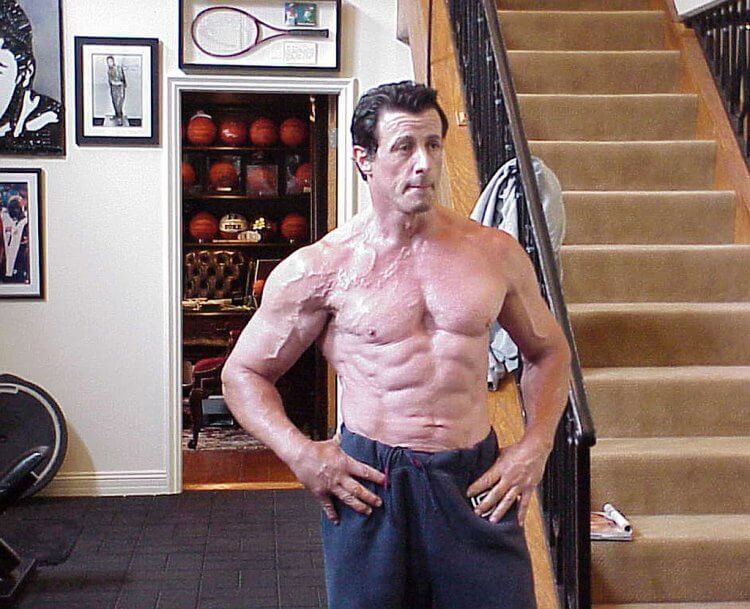
It has long been an open secret that many performers in the entertainment industry take, or are widely presumed to take, anabolic steroids and human growth hormone (hGH), along with their “recreational” drugs like cocaine and marijuana. No one should be surprised that performers whose careers require taut skin and well-defined muscles would use PIED’s (performance- and image-enhancing drugs). In the performance-driven world of workplace doping, there are few workplaces that reward effective doping procedures as lavishly as the stages and screens on which actors and musicians make their fortunes. The $8000 fine Sylvester Stallone paid after Australian customs officers found 48 vials of the growth hormone Jintropin (somatropin) in his luggage in 2007 was a tiny price to pay for the professional benefits he believes he gets from the drugs.
“As you get older,” Stallone explained, “the pituitary gland slows and you feel older, your bones narrow. This stuff gives your body a boost and you feel and look good. Doing Rambo is hard work.” And the hard work put in by screen warriors and stuntmen often requires pharmaceutical support.
In the Stallone case, the workplace doping rationale was endorsed by both the defendant and the prosecutor. Even the deputy chief magistrate handling the case put in a mitigating word for the 60-year-old action star: “There is no suggestion that the substances were being used for anything other than cosmetic or therapeutic purposes. He has shown contrition, he has expressed his remorse.” Serving up the misguided notion that a patient should feel “contrition” over taking a “therapeutic” drug provided the magistrate with the politically correct cover to sweep the entire matter under the rug where everyone involved clearly felt it belonged. i
It is hard to believe that the global publicity resulting from Stallone’s drug bust Down Under hurt his career. It is more likely that making a boxing film in your sixties earns you the special exemption from anti-doping rules that is reserved for seniors who have gone that extra mile to defy the aging process.
The legal kabuki enacted by both sides in the Stallone case is an accurate representation of how hormone doping works in the entertainment industry. Drug use is endemic and is regarded as an entitlement by performers. The networks composed of black-market dealers and prescription-writing doctors operate with impunity. Police investigations and prosecutions are few and far between. Banishment to the legal and professional purgatory that engulfs famous athletes like Alex Rodriguez is virtually unknown. Many actors and musicians have been consumed (and, in a past era, disgraced) by their drug habits, but these heroin- and cocaine-fuelled tragedies have had nothing to do with performance-enhancement.
The really interesting aspect of PIED use in Hollywood is the uncontroversial status of the “open secret.” The social arrangement that unites performers and journalists and law enforcement in a conspiracy of silence allows workplace doping in Hollywood to function with an absolute minimum of exposure and public disapproval.
An “open secret” is an arrangement, an informal social contract that remains intact because no sufficiently influential person or interest group chooses to intervene and disrupt it. An open secret thus involves a tension between the toleration of what is illegal or illicit or suspicious and the social mandate we expect to condemn and sometimes punish socially unacceptable behaviors. The toleration of performance-enhancing drug use among entertainers is one such arrangement we will examine in a future column.
Endnotes:
“Stallone guilty of importing growth hormone into Australia,” The Guardian (May 17, 2007).
[http://www.theguardian.com/world/2007/may/21/australia.film]

About the author
John Hoberman is the leading historian of anabolic steroid use and doping in sport. He is a professor at the University of Texas at Austin and the author of many books and articles on doping and sports. One of his most recent books, “Testosterone Dreams: Rejuvenation, Aphrodisia, Doping”, explored the history and commercial marketing of the hormone testosterone for the purposes of lifestyle and performance enhancement.
No replies yet
Loading new replies...
Join the full discussion at the MESO-Rx →